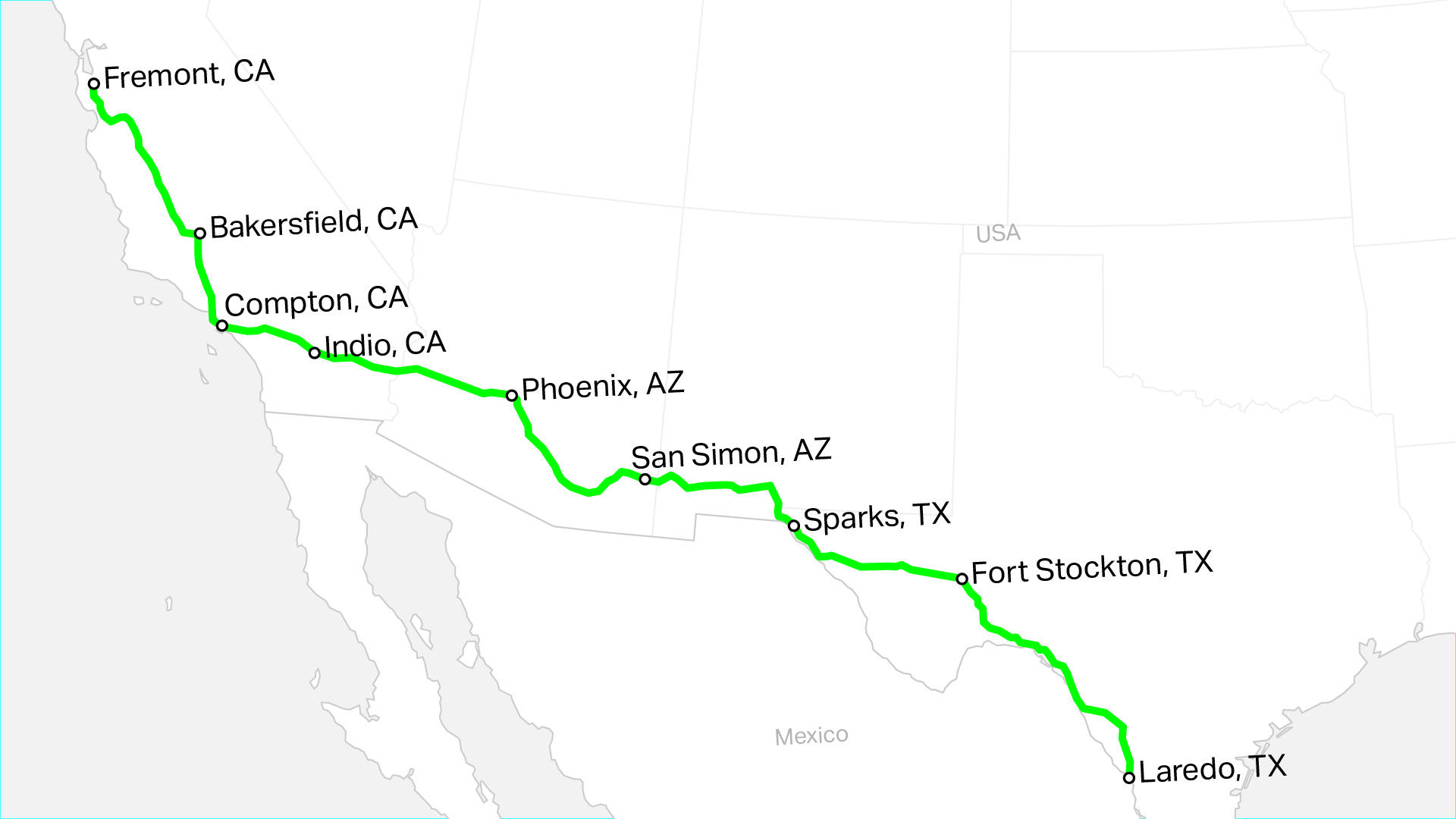Tesla is pushing forward with a plan to build an electric big rig charging corridor stretching from Texas to California, despite being snubbed by a lucrative federal funding program that’s part of Biden’s Bipartisan Infrastructure Law. But the original scope of the project could still change, TechCrunch has learned.
The company had been seeking nearly $100 million from the Charging and Fueling Infrastructure (CFI) Discretionary Grant program under the Federal Highway Administration (FHWA). Combined with around $24 million of its own money, Tesla wanted to build nine electric semi-truck charging stations between Laredo, Texas and Fremont, California.
The corridor, if built, would be a first-of-its-kind charging network that could enable both long-distance and regional electric trucking and help clean up a big chunk of the otherwise dirty transportation sector. Without it, though, Tesla’s promise to electrify heavy-duty trucking could fall even farther behind schedule than it already is.
The project as pitched to the FHWA was called TESSERACT, which stands for “Transport Electrification Supporting Semis Operating in Arizona, California, and Texas,” according to a slide buried in a 964-page filing with the South Coast Air Quality Management District. (Tesla collaborated with SCAQMD on the application.)
But Tesla was not among the 47 recipients that the Biden administration announced in January. Collectively, those winners received $623 million to build electric vehicle charging and refueling stations across the country. This is despite Tesla winning around 13% of all other charging awards so far from the Infrastructure Act, though that has only netted the company around $17 million.
Rohan Patel, who left his VP position at Tesla this week as the company laid off 10% of its workforce, said in a message to TechCrunch that Tesla may turn to state funding opportunities, or future rounds of the CFI program. Some of the sites along the route “are no-brainers even without funding,” he said.

Image Credits: TechCrunch
The 1,800-mile route would theoretically connect Tesla’s two North American vehicle factories, as well as one that is planned — but delayed — in Mexico. Each station was originally slated to be equipped with eight 750kW chargers for Tesla Semis, and four chargers open to other electric trucks. It’s unclear how effective it would be if the company was unable to build all nine stations, which are situated at roughly equal distances along the route.
About half of the Biden administration’s choices for the CFI funding focused on building out EV charging infrastructure in “urban and rural communities, including at convenient and high-use locations like schools, parks, libraries, multi-family housing, and more.”
The other half was dedicated to funding 11 “corridor” projects, including a number on the same I-10 corridor that makes up part of Tesla’s proposed route. That includes $70 million to the North Texas Council of Governments to build up to five hydrogen fueling stations for medium and heavy-duty trucks in the Dallas, Houston, Austin, and San Antonio areas.
“The project will help create a hydrogen corridor from southern California to Texas,” the Department of Transportation wrote in a statement in January.
“Funding hydrogen stations will go down as purely wasted money,” Patel told TechCrunch this week.
While he no longer speaks on behalf of Tesla, he also criticized funding hydrogen infrastructure when he was still with the company.
“Governments around the globe are wasting tax dollars on hydrogen for light/heavy duty infrastructure,” he wrote on X in February. “Like smoking, it’s never too late to quit.”
Funding isn’t the only challenge to the project. Another complicating factor could be Tesla’s recent restructuring.
Tesla CEO Elon Musk has said the company is now “balls to the wall for autonomy,” and has reportedly already sacrificed a planned low-cost EV in favor of making a purpose-built robotaxi the company’s priority. The Semi is years behind schedule, and Tesla has only built around 100 to date.
Despite all this, the Tesla Semi program is still slowly attracting customers. Just a few days after the restructuring, the head of the Semi program Dan Priestly announced via social media a new potential customer for the trucks. Priestly also said in March that Tesla has been using Semis to ship battery packs from Nevada to the Fremont factory.
techcrunch.com




